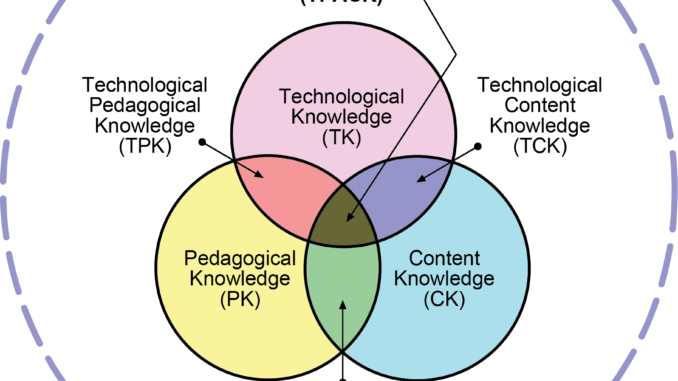
SLiC Archives Feature: This article first appeared in School Libraries in Canada Volume 32 Number 1, Fall 2013.
By Anita Brooks Kirkland
We’ve been talking about the effective integration of technology into learning for a very long time, yet it remains an elusive goal. Certainly progress has been made, but in far too many cases we see pockets of excellence, with innovative teachers leveraging technology in powerful ways. In far too many schools and classrooms, however, technology is still seen as a frill or even a threat.
But why should this be? Our society is immersed in technology. Our students have never known a time where technology use wasn’t interwoven into virtually every aspect of their lives. More and more teachers in our system are themselves “digital natives”. Shouldn’t they be able to make the connections that have largely eluded a generation of educators? Certainly that seems to be a widely held expectation.
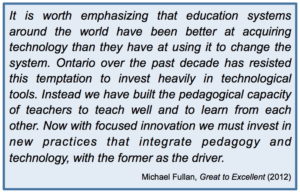 But is it really that simple? It is perhaps a revelation that many young teachers, despite apparent facility with technology use, struggle as much as any educator in making meaningful connections to learning contexts. Teacher education about technology is often disconnected from learning about effective pedagogy, leaving teachers to make those elusive connections for themselves. (Jaipal Jamani & Figg, 2013)
But is it really that simple? It is perhaps a revelation that many young teachers, despite apparent facility with technology use, struggle as much as any educator in making meaningful connections to learning contexts. Teacher education about technology is often disconnected from learning about effective pedagogy, leaving teachers to make those elusive connections for themselves. (Jaipal Jamani & Figg, 2013)
New Models for Learning with Technology
The good news is that solving this elusive problem has provoked some deeper thinking into how to leverage technology in learning contexts, and in the past few years new models have emerged that are already proving very useful for teachers and teacher educators. As teacher-librarians, we should count ourselves amongst the latter, as the role of the teacher-librarian as technology coach is already well established.
Two models, TPACK and SAMR have particular promise – the first focusing on teacher competencies and instructional planning, and the second providing a framework for assessing the efficacy of technology tasks.
TPACK: Technological, Pedagogical and Content Knowledge
Put simply, the TPACK model provides a framework for identifying the teacher knowledge required to integrate technology effectively within the complexities of the larger context of teaching. In TPACK, Technological Knowledge – TK, is most effective when it is combined with deep Content Knowledge – CK (curriculum subject matter) and Pedagogical Knowledge – PK (teaching strategies and knowledge of the learner). While the intersection of Content Knowledge and Pedagogical Knowledge is largely understood to be at the heart of effective teaching, adding Technological Knowledge into the mix provides an effective filter for teachers to really examine the way that they think about technology integration.
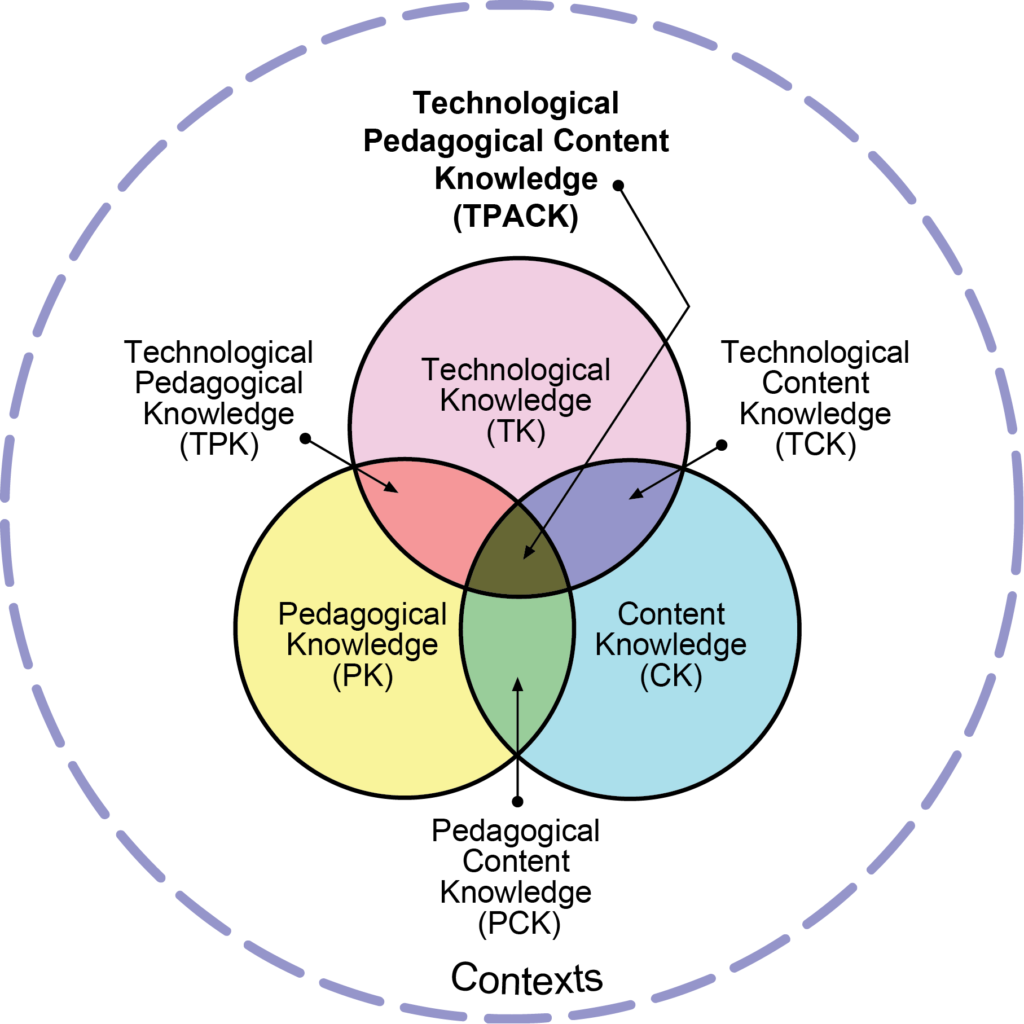
Filtering instructional planning through the TPACK model should serve to eliminate frivolous or irrelevant use of technology, and inspire teachers to make deeper connections to all aspects of effective instruction. The TPACK website explains the model in more depth than afforded in this column, and is definitely worth exploring.
SAMR: Substitution, Augmentation, Modification, Redefinition
While TPACK frames our thinking about the relevance of technology in learning, SAMR provides us with a critical framework for assessing the richness of the technology task itself.
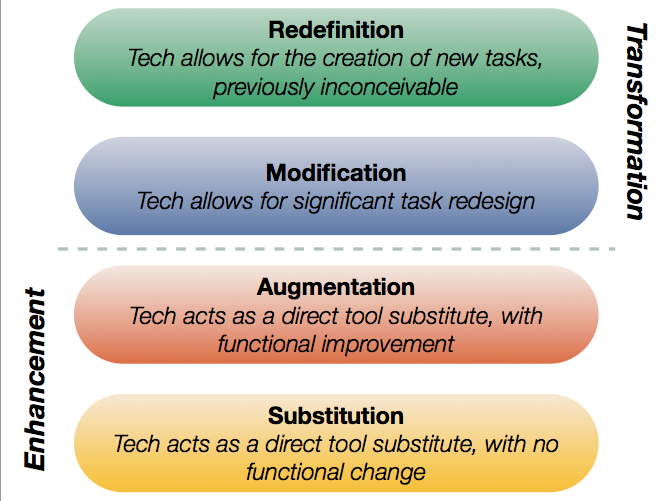
While tasks grouped under Enhancement in the model (Substitution and Augmentation) may serve some useful purpose (i.e., word processing functionality may be more efficient than handwriting), technology tasks that can be categorized on the Transformation side of the model (Modification and Redefinition) provide opportunities for learning that do not exist without technology. For example, a shared document, available online 24/7 offers collaborative writing and knowledge-creation opportunities not otherwise possible.
The key to using the SAMR model is not to think of it as a progression to work through. Really using technology effectively means creating the kind of rich tasks that redesign traditional ways of learning and create opportunities that do not exist without the use of the technology. A Substitution or Augmentation task may serve a particular purpose, but chances are it does not leverage technology for richer learning experiences.
More Than a Pretty Picture
TPACK and SAMR are by no means the only models for technology integration. Other images seem to cycle endlessly through online professional networks. Most notable amongst these are the endless versions of Bloom’s “Digital” Taxonomy that align particular computer and/or mobile applications with each element or mode of thinking. These diagrams are, in my view, incredibly ill conceived. Trying to pigeonhole a rich and varied application like Google Drive as being useful for only one type of thinking skill is overly simplistic and not useful for making stronger connections to effective learning strategies. The SAMR model, by comparison, recognizes the diverse ways one application can facilitate learning.
Don’t Press the Easy Button Yet!
The TPACK and SAMR models may make sense, but that doesn’t mean that every teacher will be able to make instant connections. Nor will every teacher-librarian, who arguably may have more experience with learning technologies than the average teacher. Designing a rich learning task is a challenge for any teacher, and trying to synthesize the dynamic world of technology into the mix adds an extra element of risk and uncertainty. Understanding the models is not enough. Having facility with technology is not enough. Technology education for teachers that centres on skills first does not help either. Innovative teacher educators are now exploring ways to have technology learning driven by content and pedagogy (Jaipal Jamani & Figg, 2013). Implementing a similar approach within a school offers a wonderful opportunity for the teacher-librarian, in the context of a learning commons approach.
The Learning Commons: A Natural Fit
 There is no doubt that the effective use of technology for learning is at the core of teacher-librarianship, and the teacher-librarian is often the school’s “go-to” person when it comes to tech. Within the context of a learning commons approach, where everyone is a learner, the teacher-librarian can play a pivotal role in implementing a TPACK approach to instructional planning and assessing learning tasks through the filter of the SAMR model. Jayme Linton (2012) makes a strong case for using TPACK as a framework for collaborative teacher inquiry within a learning commons model, leveraging the teacher-librarian’s leadership role.
There is no doubt that the effective use of technology for learning is at the core of teacher-librarianship, and the teacher-librarian is often the school’s “go-to” person when it comes to tech. Within the context of a learning commons approach, where everyone is a learner, the teacher-librarian can play a pivotal role in implementing a TPACK approach to instructional planning and assessing learning tasks through the filter of the SAMR model. Jayme Linton (2012) makes a strong case for using TPACK as a framework for collaborative teacher inquiry within a learning commons model, leveraging the teacher-librarian’s leadership role.
Teacher-librarians bring even greater contexts that can enrich a collaborative teacher inquiry into learning with technology. We have our own TPACK “Content Knowledge” about information ethics: copyright, plagiarism and citation. We can help students and teachers understand the rights of information creators and users in our sharing, remix culture. Teacher-librarians can extend their support for related learning about digital citizenship.
TPACK and SAMR offer new and powerful ways for teacher-librarians to extend their own role as technology coaches in the school. The challenge is, of course, to humbly reframe some of our own notions about technology-enabled learning, and seeing this as an opportunity to sharpen our own understanding – accepting that our primary role is to model learning how to learn.
Resources to Explore
The TPACK website explains the model, connects to additional resources, and facilitates a learning community for sharing ideas for implementation: http://tpack.org/
Dr. Ruben Puentadura shares resources related to the SAMR model, which he first conceptualized: http://www.hippasus.com/rrpweblog/
A teacher explains TPACK and SAMR, in two minutes each.
References
Fullan, M. (2013). Great to excellent: Launching the next stage of Ontario’s education agenda. Toronto: Queen’s Printer for Ontario. Retrieved from http://www.michaelfullan.ca/wp-content/uploads/2013/09/13_Fullan_Great-to-Excellent.pdf
Jaipal Jamani, K. and Figg, C. (2013). The TPACK-in-practice workshop approach: A shift
from learning the tool to learning about technology-enhanced teaching. Proceedings of
the International Conference on e-Learning 2013.
Linton, A. (2012). TPACK as a framework for collaborative inquiry in the learning commons.
Teacher Librarian 39(6).
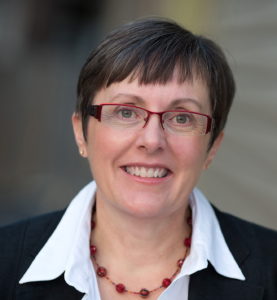 Anita Brooks Kirkland is an independent consultant and the Chair of Canadian School Libraries. As a writer and presenter Anita specializes in the areas of digital literacy and the role of the school library learning commons. She draws on her extensive experience as a teacher educator, as an instructor in school librarianship for the Ontario Institute for Studies in Education and previously as Consultant for K-12 Libraries at the Waterloo Region District School Board. Anita shares an extensive collection of articles and presentations on her website and blog, www.bythebrooks.ca
Anita Brooks Kirkland is an independent consultant and the Chair of Canadian School Libraries. As a writer and presenter Anita specializes in the areas of digital literacy and the role of the school library learning commons. She draws on her extensive experience as a teacher educator, as an instructor in school librarianship for the Ontario Institute for Studies in Education and previously as Consultant for K-12 Libraries at the Waterloo Region District School Board. Anita shares an extensive collection of articles and presentations on her website and blog, www.bythebrooks.ca